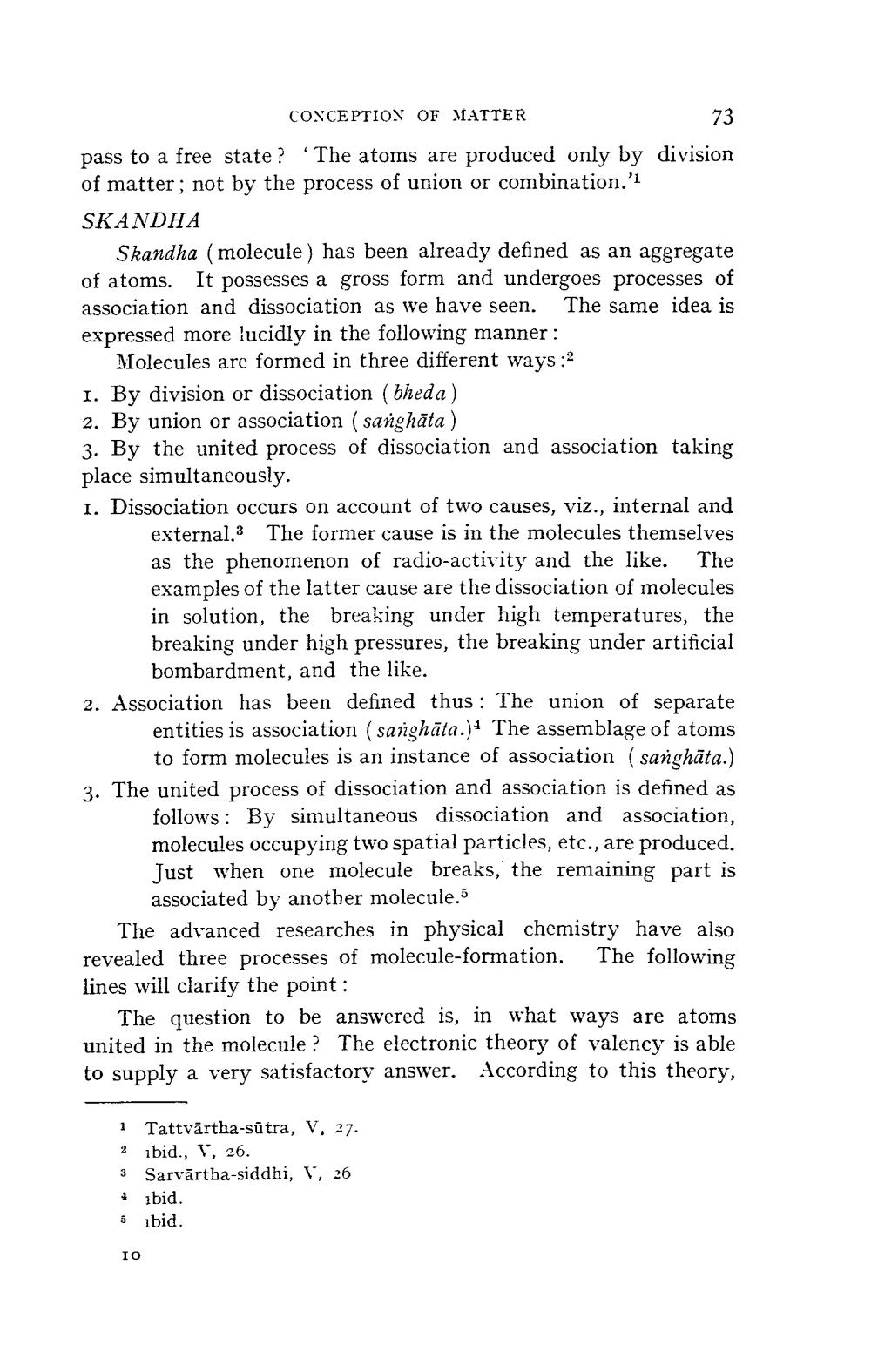________________
CONCEPTION OF MATTER
73
pass to a free state? ‘The atoms are produced only by division of matter; not by the process of union or combination.'1 SK4NDHA
Skandha (molecule ) has been already defined as an aggregate of atoms. It possesses a gross form and undergoes processes of association and dissociation as we have seen. The same idea is expressed more lucidly in the following manner:
Molecules are formed in three different ways: 1. By division or dissociation (bheda) 2. By union or association ( sanghāta ) 3. By the united process of dissociation and association taking place simultaneously. I. Dissociation occurs on account of two causes, viz., internal and
external.3 The former cause is in the molecules themselves as the phenomenon of radio-activity and the like. The examples of the latter cause are the dissociation of molecules in solution, the breaking under high temperatures, the breaking under high pressures, the breaking under artificial
bombardment, and the like. 2. Association has been defined thus : The union of separate
entities is association ( sarghāta.)4 The assemblage of atoms
to form molecules is an instance of association ( sanghāta.) 3. The united process of dissociation and association is defined as
follows: By simultaneous dissociation and association, molecules occupying two spatial particles, etc., are produced. Just when one molecule breaks, the remaining part is
associated by another molecule. The advanced researches in physical chemistry have also revealed three processes of molecule-formation. The following lines will clarify the point:
The question to be answered is, in what ways are atoms united in the molecule? The electronic theory of valency is able to supply a very satisfactory answer. According to this theory,
1 Tattvārtha-sūtra, V, 27. 2. ibid., 1', 26. 3 Sarvărtha-siddhi, 1, 26
ibid. 5 ibid.
IO




